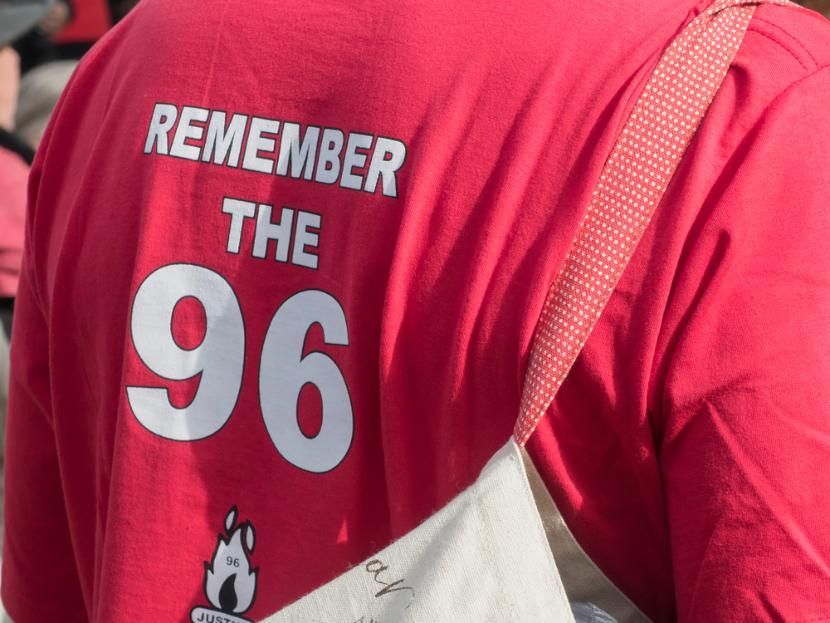Sun newspaper boycott made people in Liverpool more left wing, study shows
Posted on: 08 August 2025
A study of the Liverpool boycott of The Sun newspaper following the Hillsborough disaster has found that the boycott shaped people’s perceptions of political parties and made people more left wing.
The study focused on the famous and longstanding Liverpool boycott of The Sun newspaper after it blamed the 1989 Hillsborough Stadium crush on Liverpool F.C. supporters. 96 people died at the time of the incident and one died much later (in 2021).
Many people in Liverpool switched from the right-wing Sun to centrist or left-wing outlets. The boycott continues to this day.
The boycott provided a powerful real-world (quasi) experiment to study the effects of changes in media exposure, explains Lucas Paulo da Silva, PhD student at the Department of Political Science, School of Social Sciences and Philosophy, Trinity who undertook the study.

The study found that people who were exposed to The Sun boycott in Liverpool became considerably more left-wing compared to people in other parts of Northern England who did not experience the boycott. It also found that they perceived the UK Labour Party as more moderate and supported the Labour Party more.
“Researchers have long studied the powerful role media outlets exert on voting behaviour with much focus on how media outlets influence elections by altering people’s ideological opinions. This study, however, finds that the biggest impact was not on people’s own ideological positions, but on their perceptions of party positions.”
The research, which has been published in the peer-reviewed journal Political Behavior, analysed data from 12,771 individuals from the British Social Attitudes (BSA) surveys from 1983 to 2004. It compared changes in political attitudes among people in Liverpool who were exposed to the boycott to people in the rest of Northern England who were not exposed to the boycott.
“This study finds that media outlets shape our ideological opinions, but they have an even greater effect on how we perceive political parties’ positions, which in turn influences voting behaviour. For example, when media content depicts a party as extreme, people generally become less likely to support the party. This could be a key way in which media outlets impact election outcomes.”
“In an era of growing disquiet about the power of media organisations to distort democratic choices, this research paints a clear picture of how media elites can shape election outcomes through perceptions of party positions, not just persuasion.”
“If we want to reduce the effects of media bias, we should pay close attention to how media outlets depict party positions. It also reinforces the need for media literacy and underscores the importance of journalistic standards.”
A previous study using the same natural experiment conducted by researchers in the London School of Economics, Aarhus University, and the University of Zurich (Foos and Bischof 2002) found that the Sun boycott reduced Euroscepticism.
Background to the topic: On April 15th, 1989, a human crush occurred at the Football Association (FA) Cup semi-final between Liverpool F.C. and Nottingham Forest. Tragically, 96 people died at the time and one died much later (in 2021). There were also hundreds of injuries. The Sun newspaper falsely blamed Liverpool F.C. supporters for the Hillsborough Stadium crush, prompting a boycott of the newspaper in Liverpool that continues until today. The boycott created a rare real-world shift in media consumption, with former readers of the right-wing Sun switching to more centrist or left-wing media outlets like The Mirror.
Methodology of the study: This is a “natural experiment” (or quasi-experiment) that relies on a real-world experimental treatment of the boycott of The Sun newspaper. It involved a series of statistical tests that compared the changes in political attitudes among people in Liverpool who were exposed to the boycott (the “treatment group”) versus people in the rest of Northern England who were not exposed to the boycott (the “control group”). The study drew on data from 12,771 individuals from the British Social Attitudes (BSA) surveys from 1983 to 2004.
The full paper, ‘Media Influence and Spatial Voting: The Role of Perceived Party Positions’, can be viewed on the journal website here.
Read an analysis piece by Lucas de Silva in The Conversation here.
Media Contact:
Fiona Tyrrell | Media Relations | tyrrellf@tcd.ie | +353 1 896 3551
